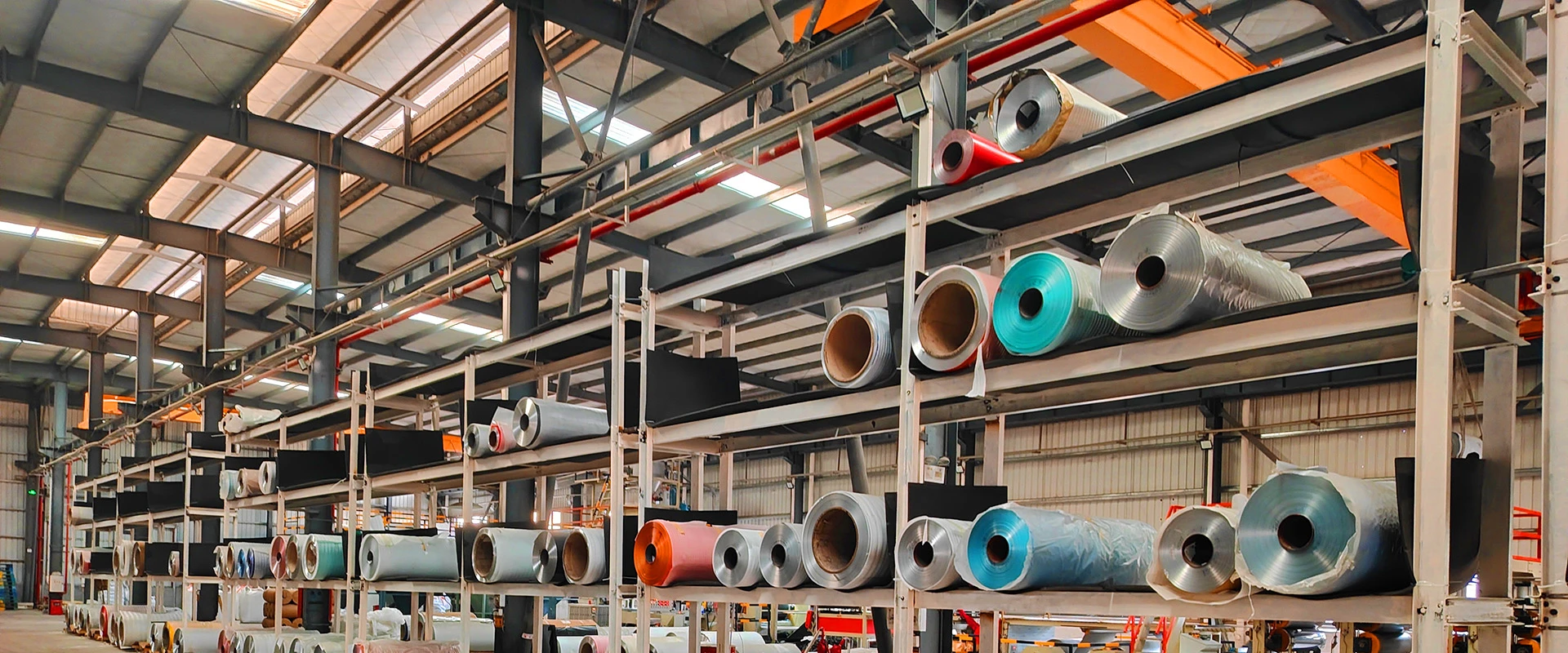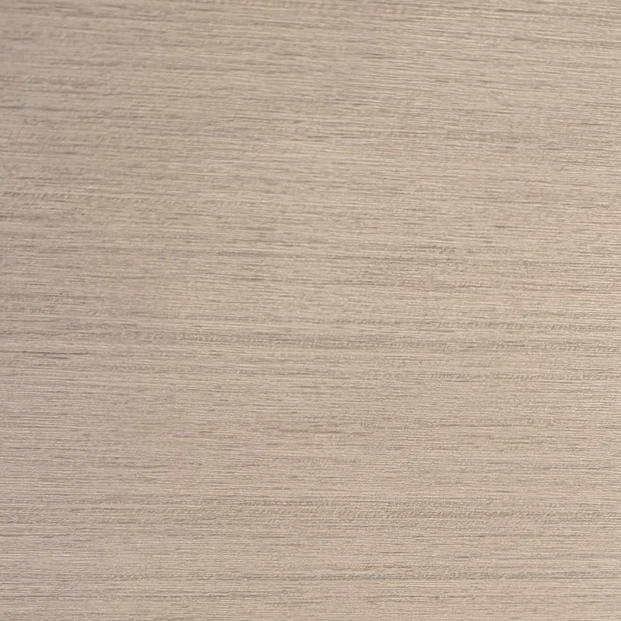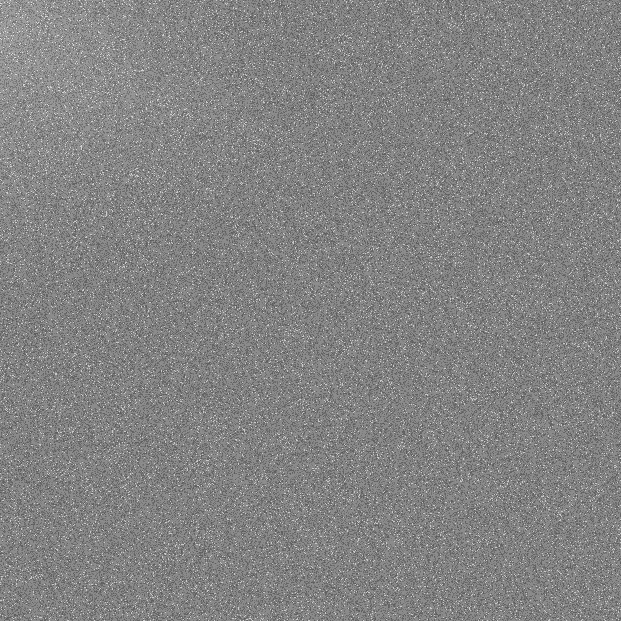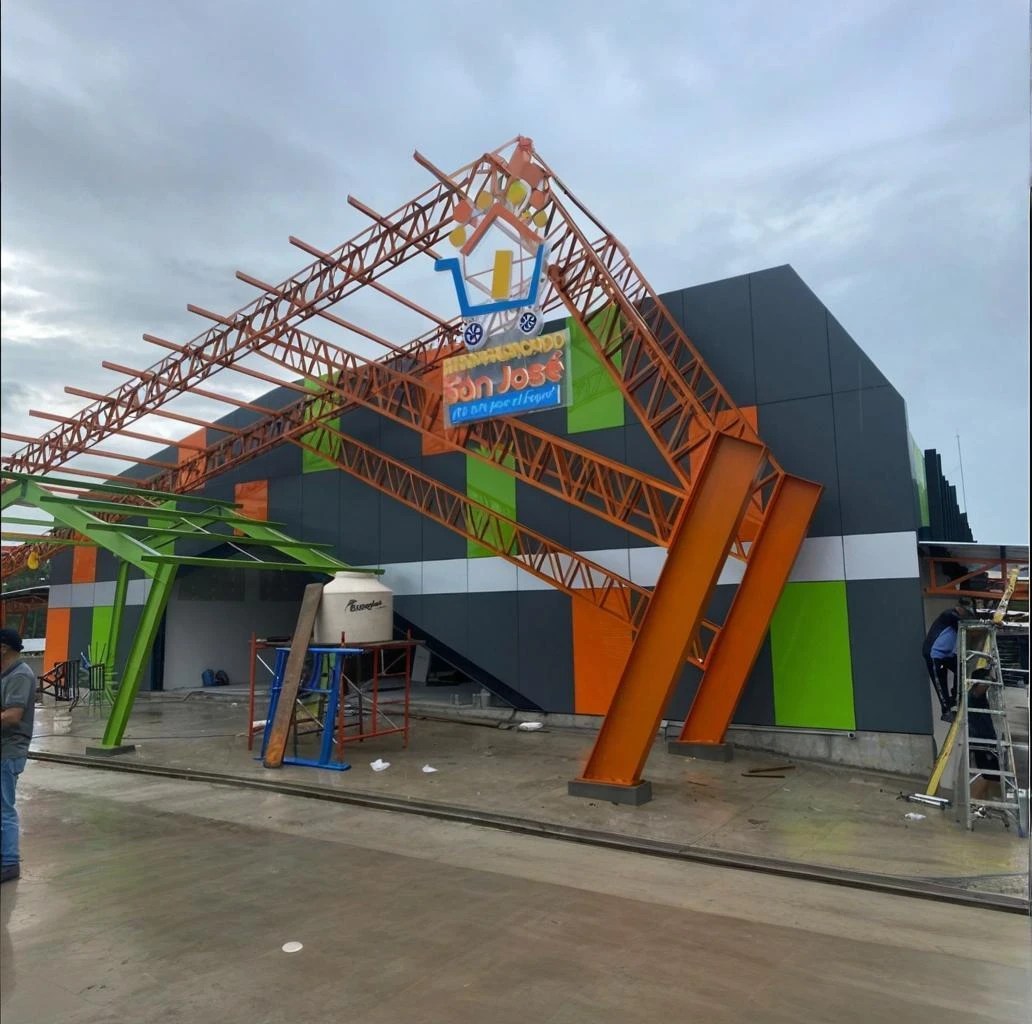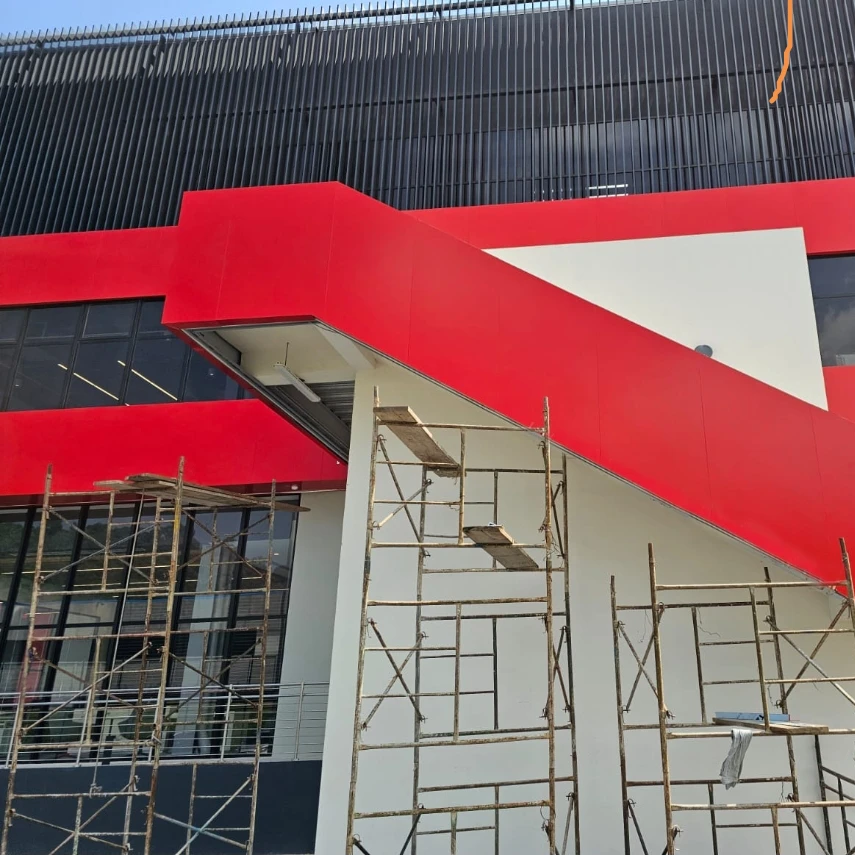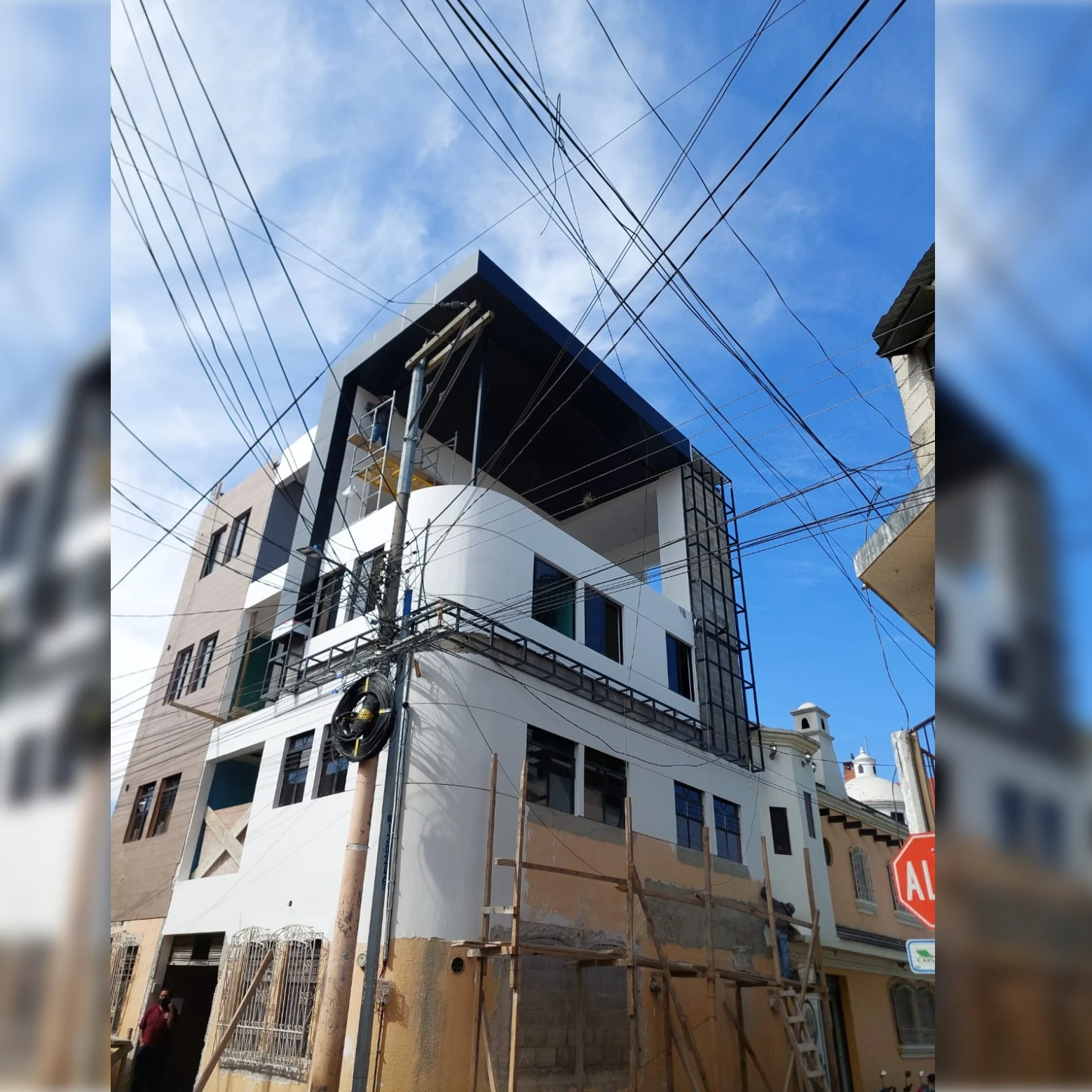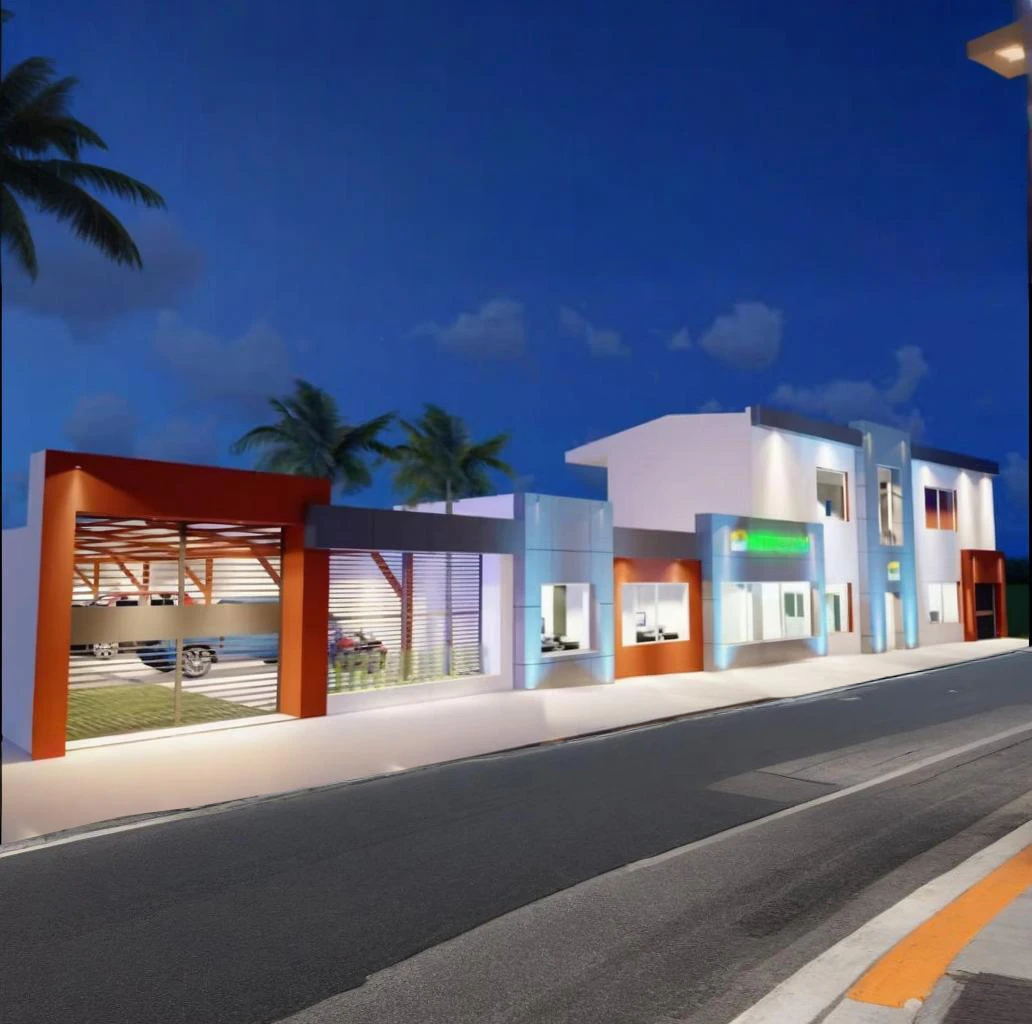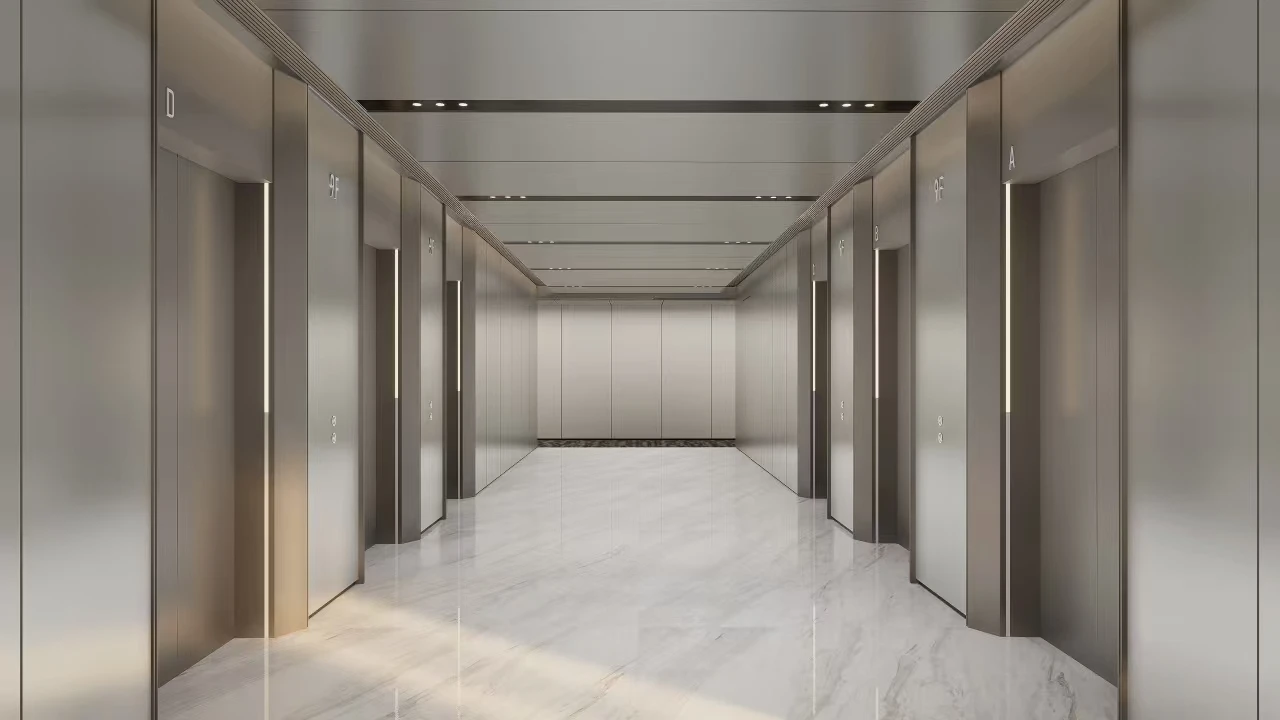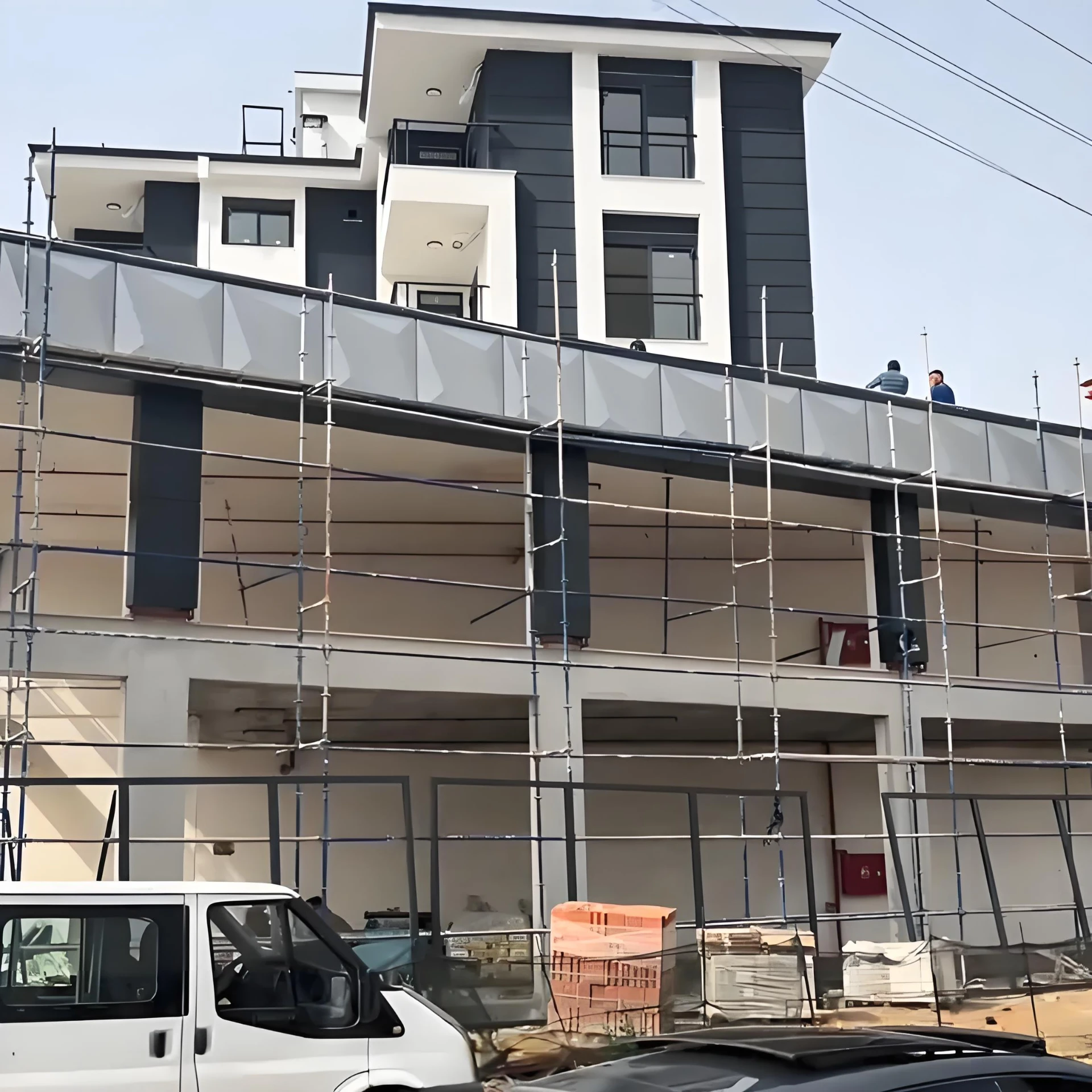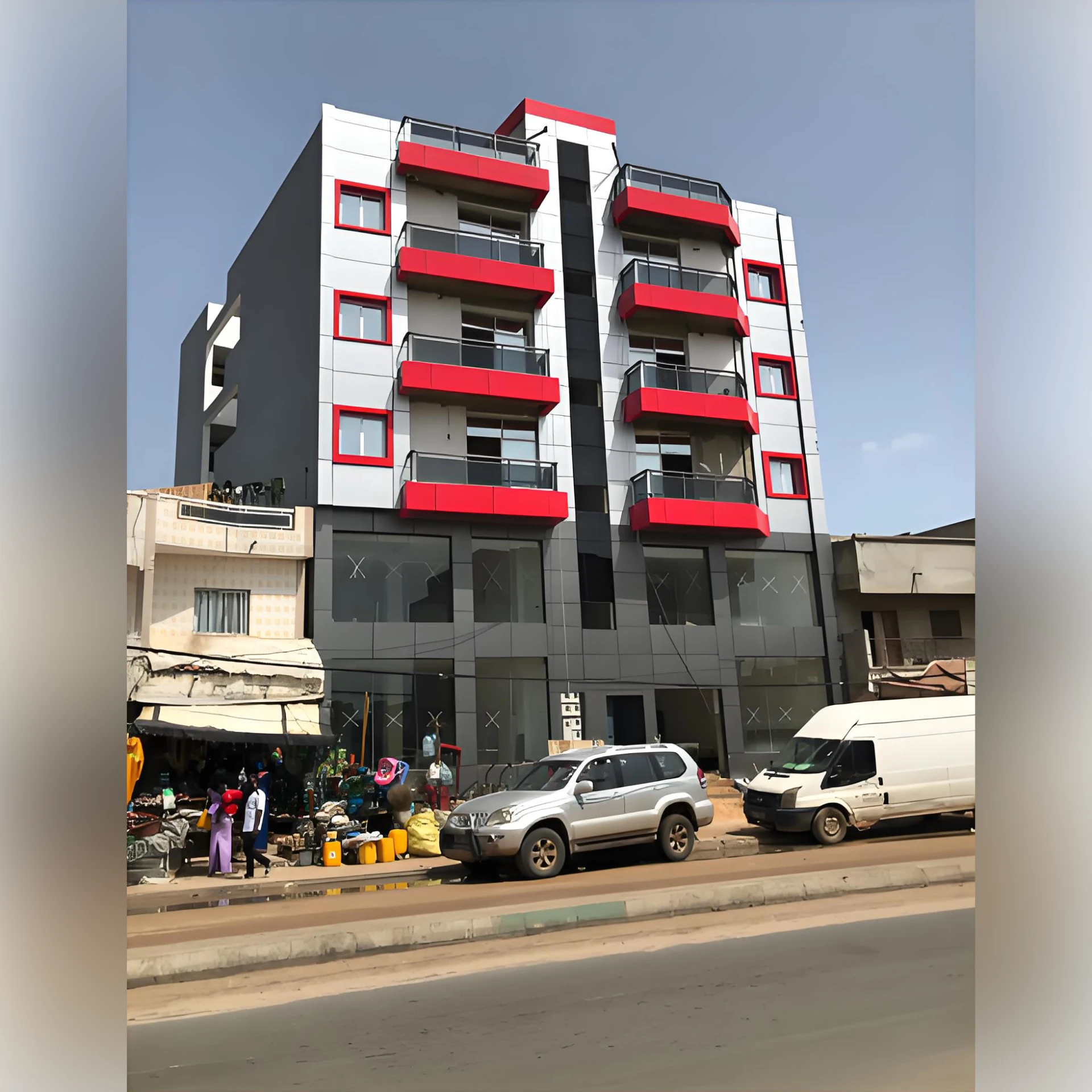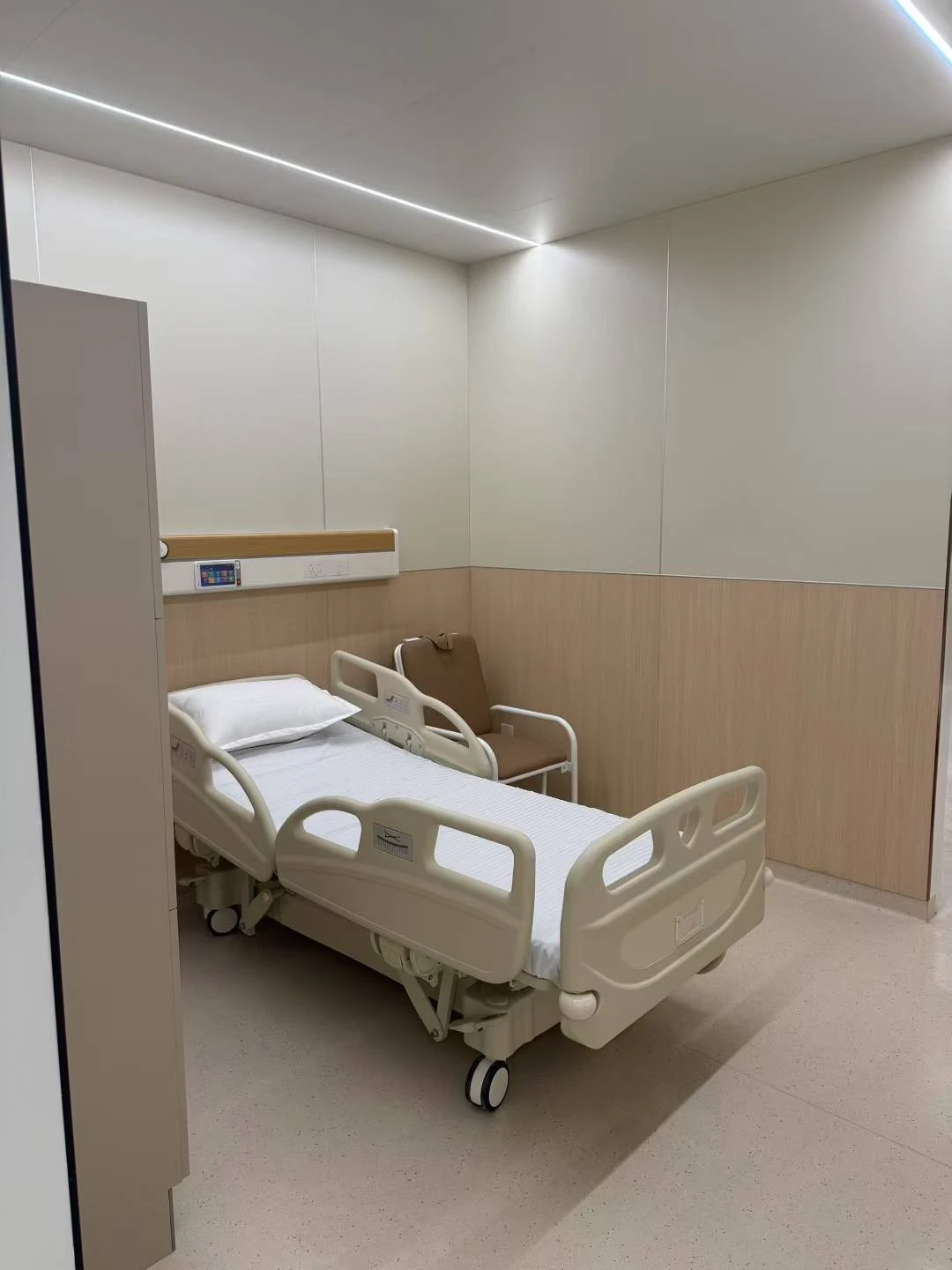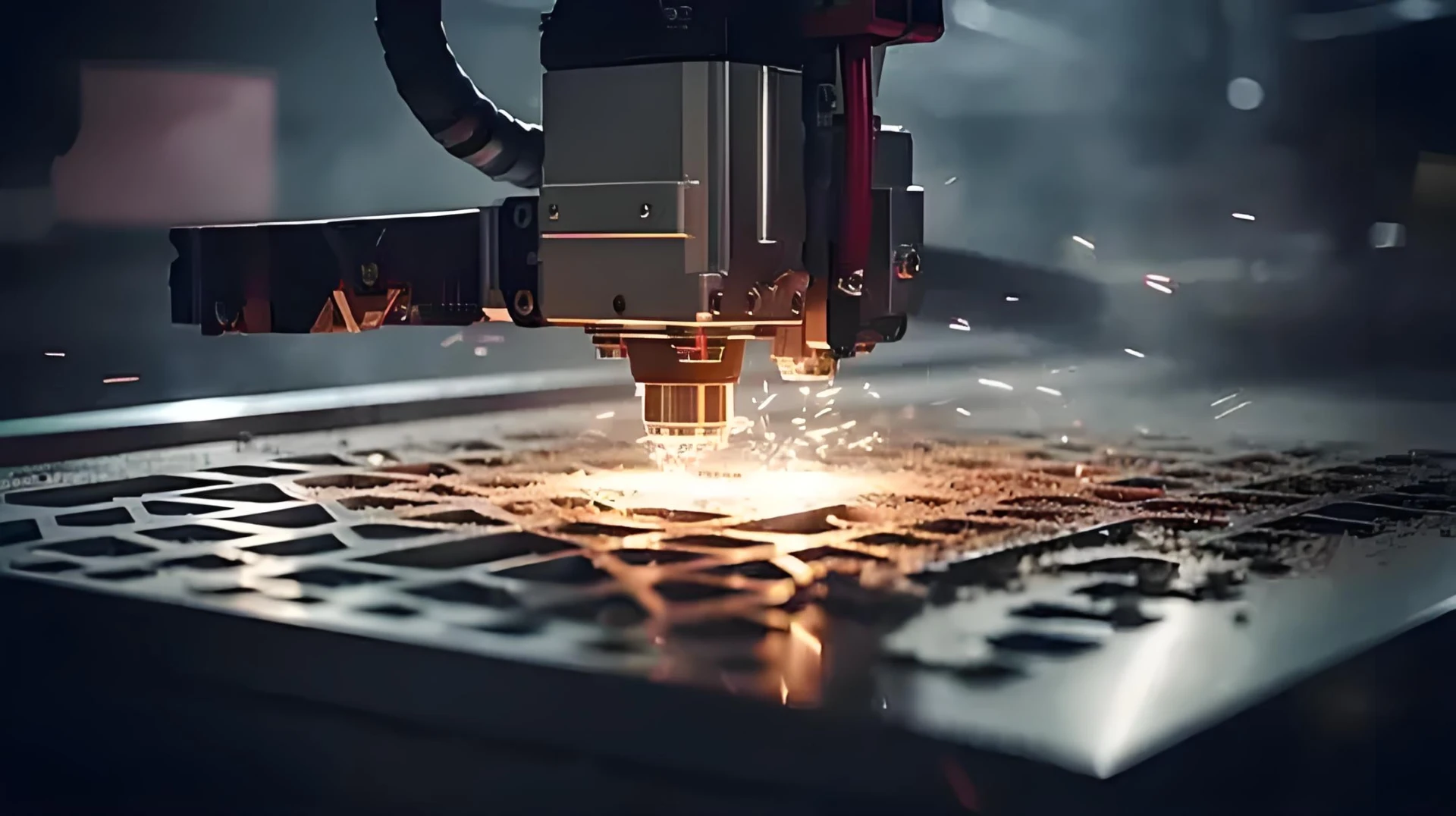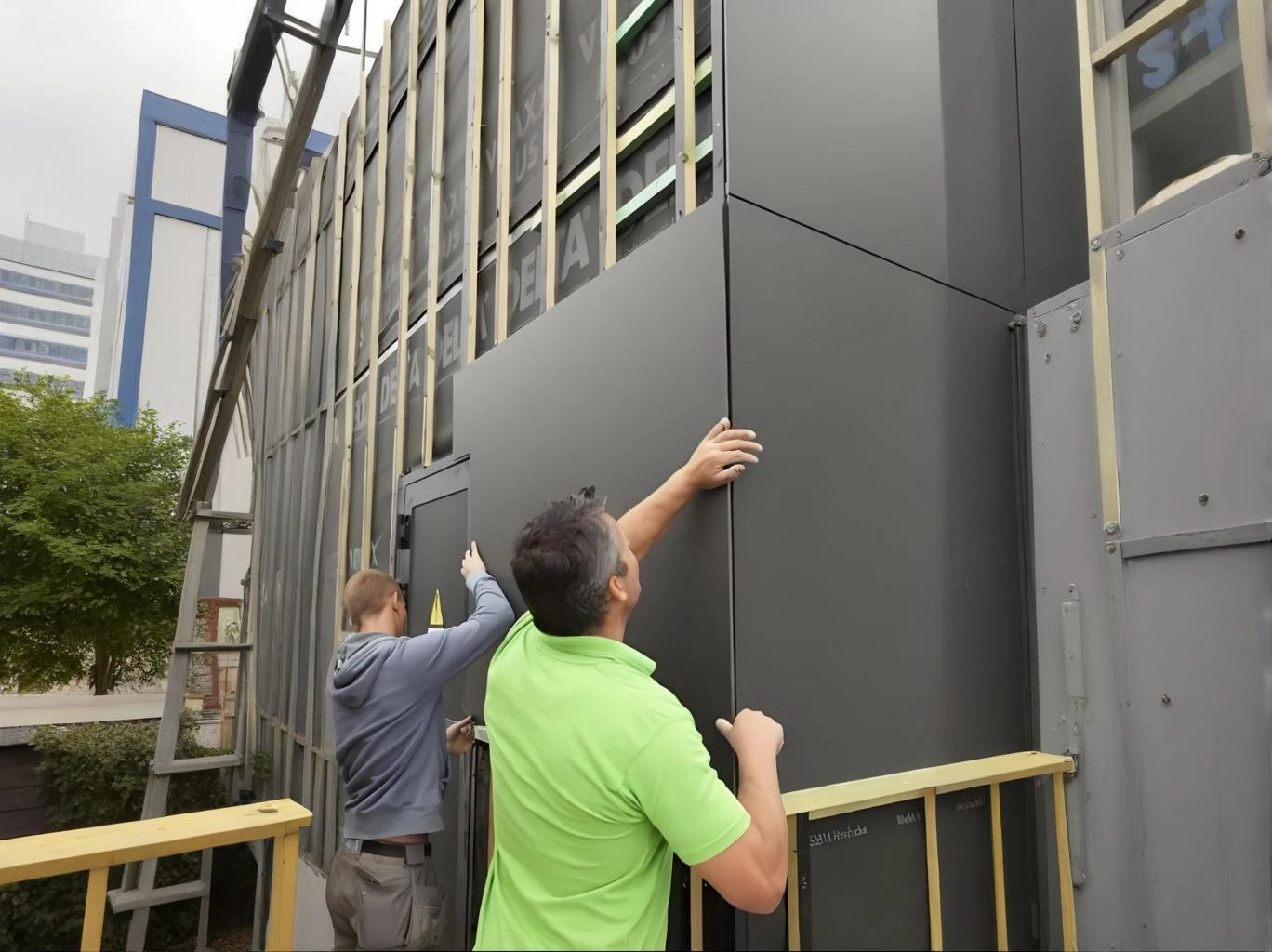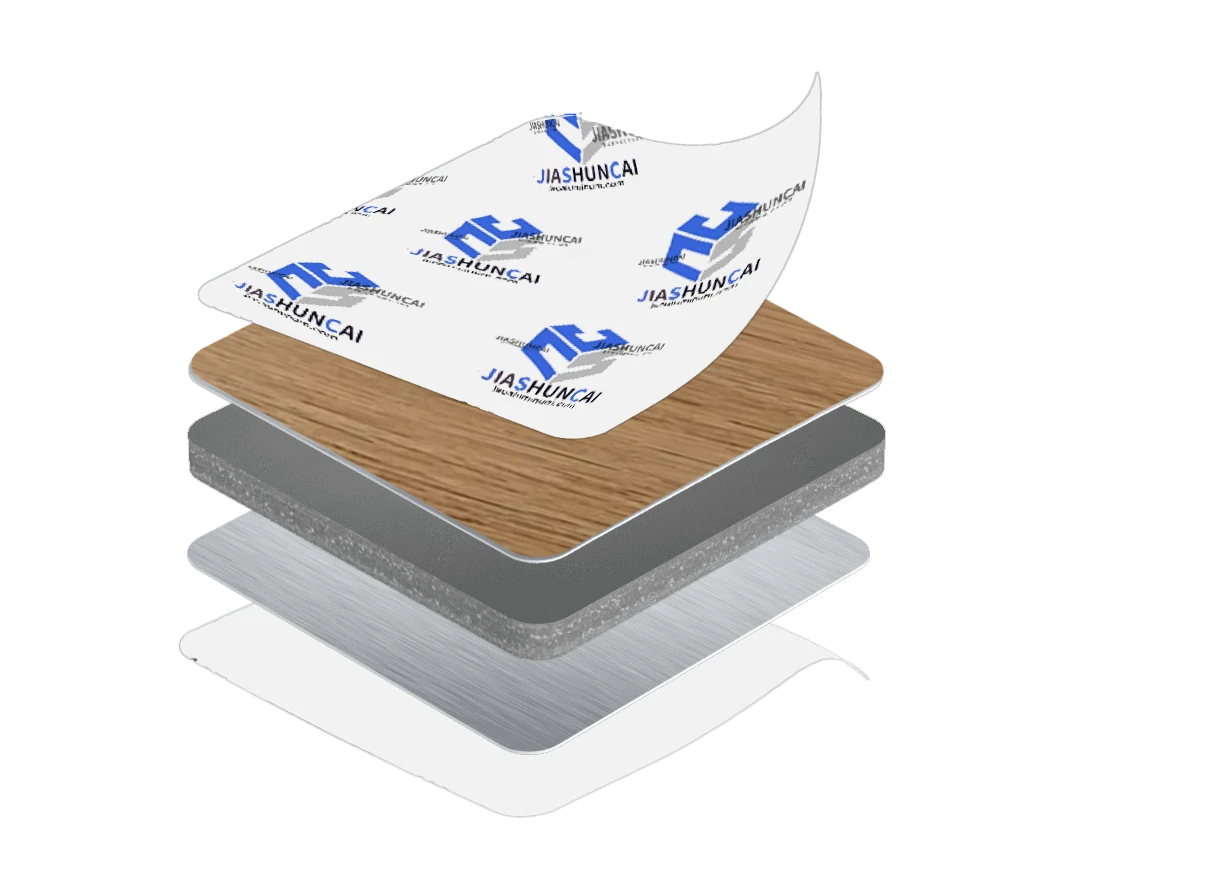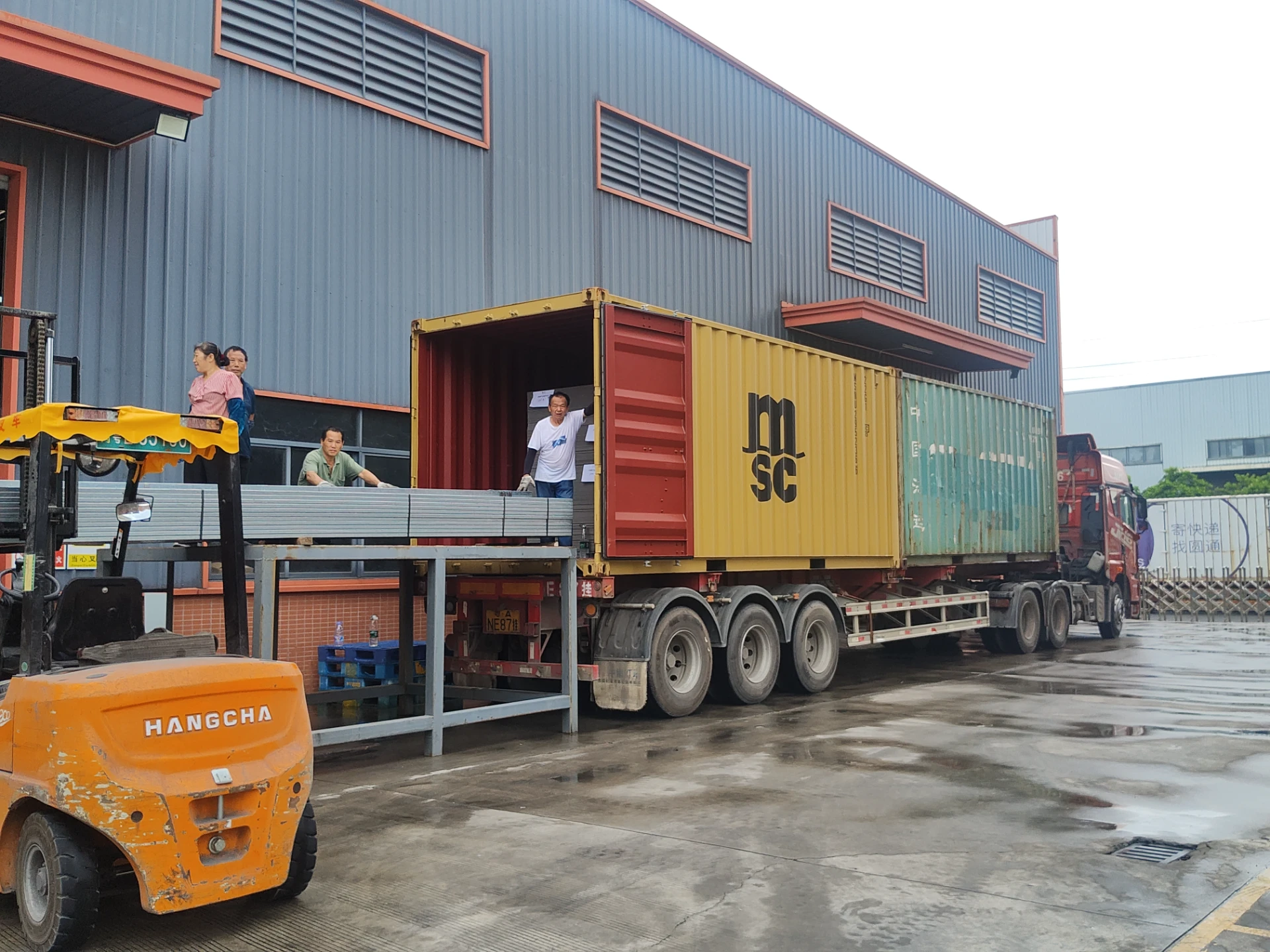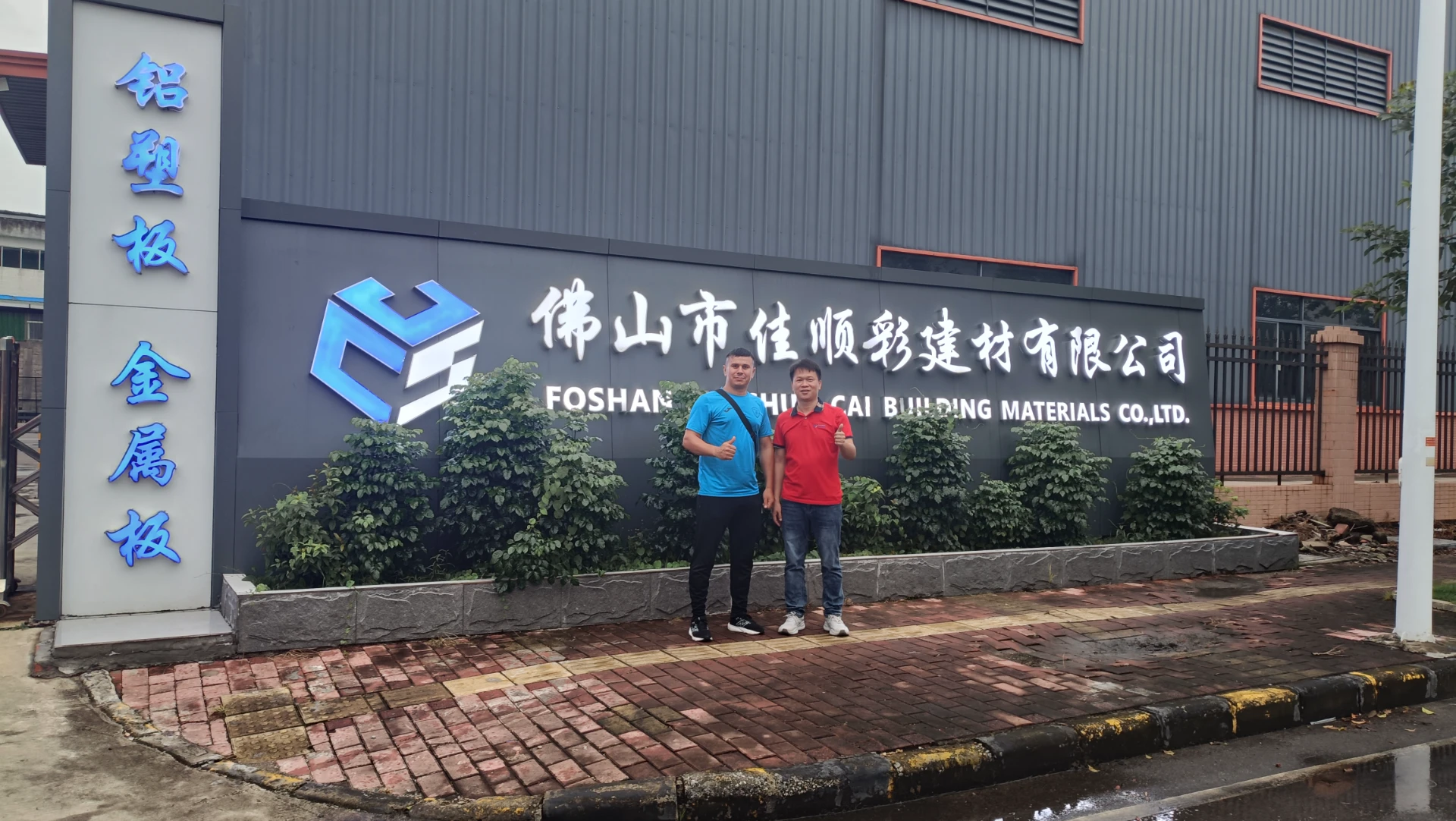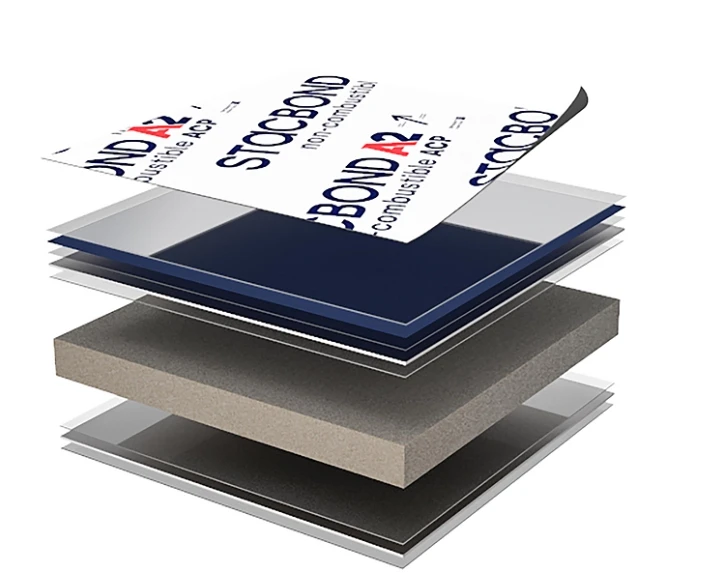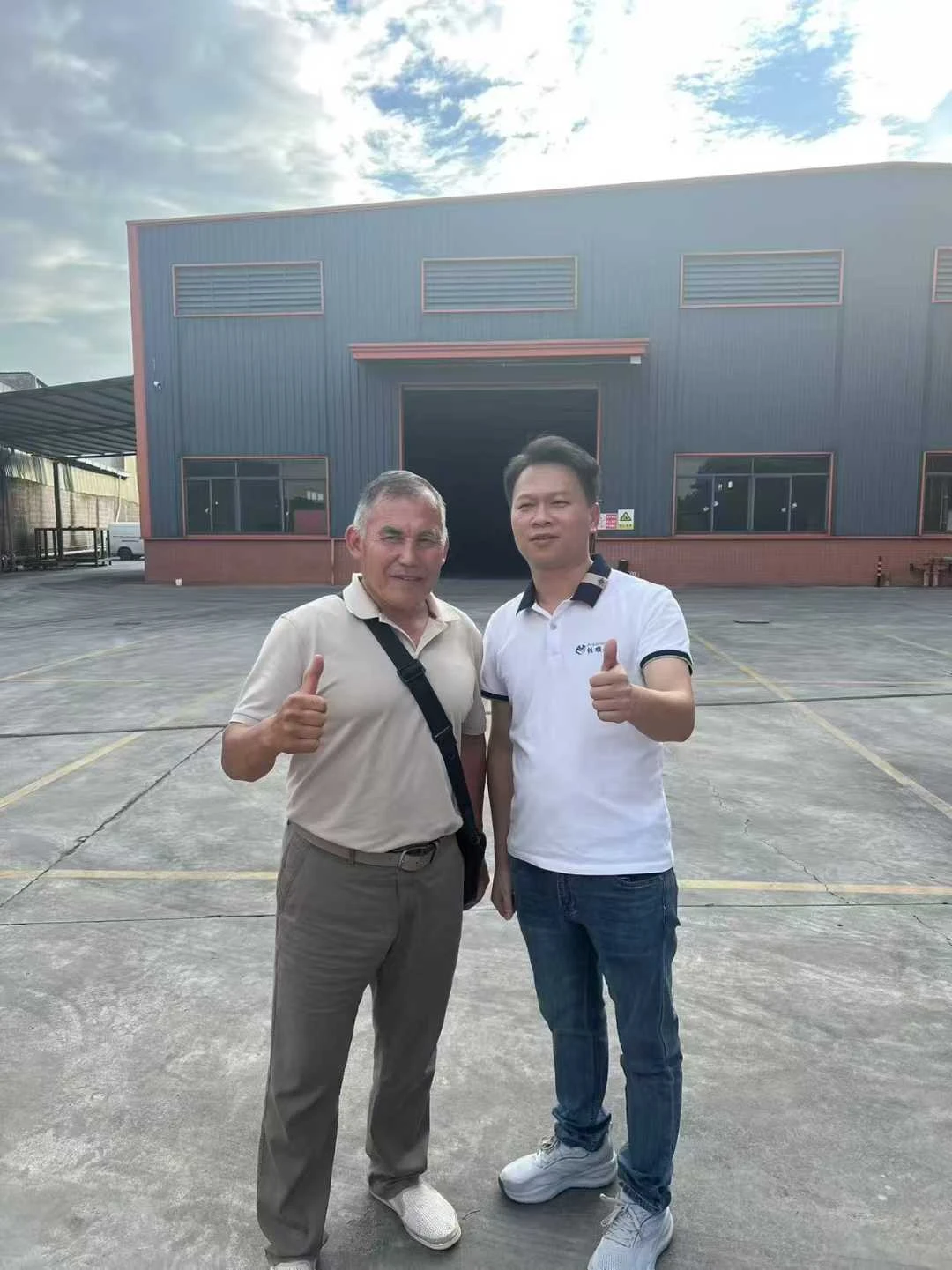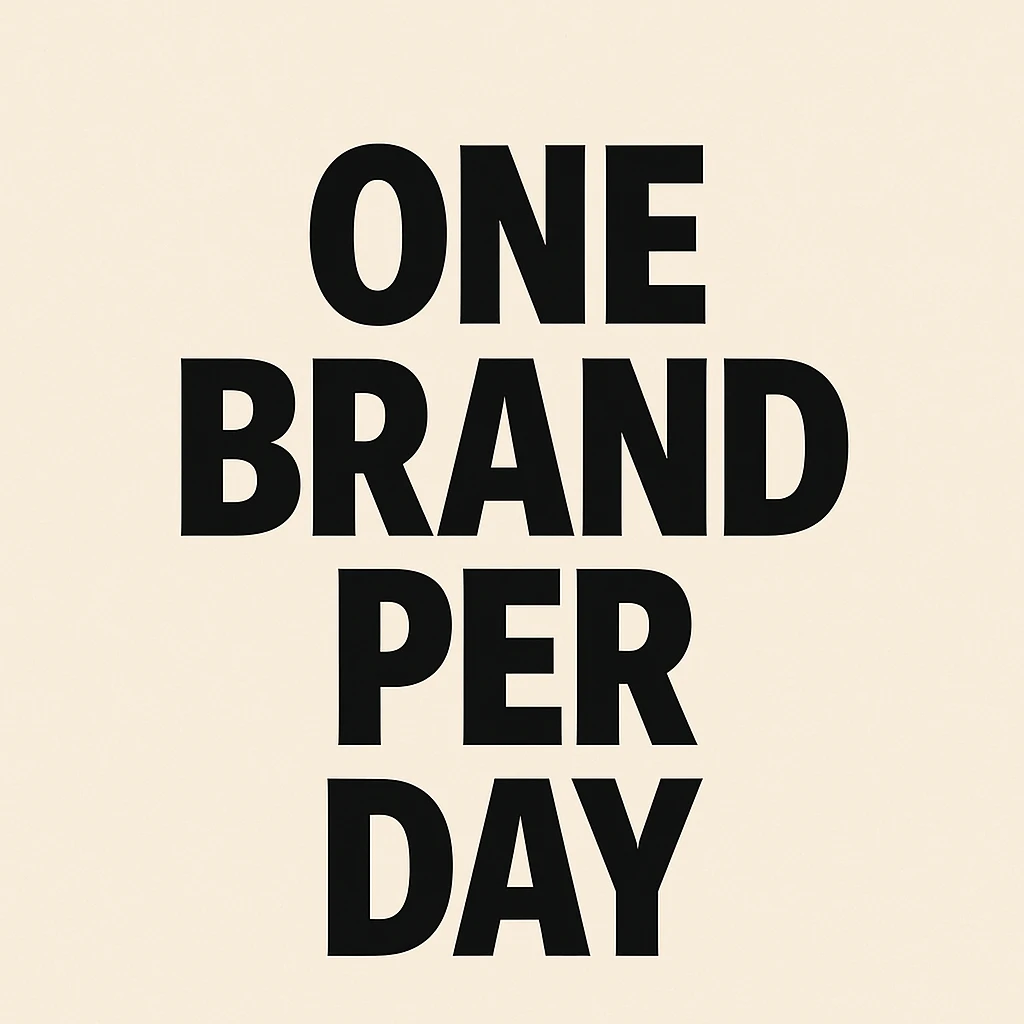Introduction to Advanced Aluminium Ceiling Panels: A Paradigm Shift in Modern Architecture and Industrial Design
In the dynamic landscape of contemporary architecture and industrial infrastructure, the selection of construction materials profoundly impacts both aesthetic appeal and long-term functional performance. Among the myriad of available options, aluminium ceiling panels have emerged as a superior solution, redefining standards for durability, design versatility, and operational efficiency. These advanced panels are not merely decorative elements but integral components engineered to meet stringent technical specifications across a diverse range of environments, from high-traffic commercial centers and sophisticated corporate offices to demanding industrial facilities such as petrochemical plants and precision manufacturing units. The inherent properties of aluminium—its exceptional strength-to-weight ratio, inherent corrosion resistance, and remarkable recyclability—make it an ideal material for ceiling systems where longevity, minimal maintenance, and environmental responsibility are paramount considerations. The rapid pace of urbanization and industrial growth globally, particularly in emerging economies, has catalyzed an unprecedented demand for robust, sustainable, and aesthetically pleasing building materials. This trend is further amplified by evolving regulatory frameworks emphasizing fire safety, acoustic performance, and energy efficiency in building design. Consequently, conventional ceiling materials often fall short of meeting these multifaceted requirements, paving the way for the widespread adoption of high-performance alternatives like aluminium. Products such as our "15 Years Without Fading" range represent the zenith of this technological evolution, offering an unparalleled commitment to enduring quality and visual integrity. This comprehensive article delves into the intricate technical aspects, innovative manufacturing processes, diverse application scenarios, and compelling advantages that position aluminium ceiling panels as the definitive choice for discerning B2B decision-makers and technical professionals seeking to elevate their projects with solutions that promise both immediate value and sustained performance over decades. We aim to provide an exhaustive resource that elucidates why investing in technologically advanced aluminium ceiling systems is a strategic imperative for modern construction and renovation endeavors, addressing not only the immediate functional needs but also contributing significantly to the overall lifecycle cost efficiency and sustainability footprint of any structure.
The Unrivaled Technical Advantages of Aluminium Ceiling Panels: A Deep Dive into Material Superiority
The superior performance of aluminium ceiling panels stems directly from the intrinsic metallurgical properties of aluminium combined with advanced engineering. Unlike traditional materials such as gypsum board, mineral fiber, or even some composite panels, aluminium offers a unique blend of characteristics that are critical for long-term structural integrity and operational efficiency. Foremost among these is its exceptional corrosion resistance, primarily due to the natural passivation layer of aluminium oxide that forms instantaneously when exposed to air. This protective layer, which self-repairs if damaged, makes aluminium highly resilient to moisture, humidity, and a wide array of chemical agents, rendering it indispensable in environments like coastal areas, laboratories, food processing facilities, and especially petrochemical or water treatment plants where exposure to corrosive elements is constant. Furthermore, the lightweight nature of aluminium—approximately one-third the weight of steel for comparable strength—significantly reduces the dead load on building structures. This translates into tangible engineering benefits, including reduced foundation requirements, lighter supporting frameworks, and simplified installation processes, which collectively contribute to lower construction costs and accelerated project timelines. This reduced weight also enhances safety during seismic events, as lighter structures are inherently less susceptible to gravitational forces.
Durability is another hallmark; aluminium ceiling panels are highly resistant to impact, warping, and sagging, maintaining their planar integrity over extended periods, even under fluctuating temperature conditions. This inherent stability ensures that the aesthetic quality and structural uniformity of the ceiling system are preserved, minimizing the need for frequent repairs or replacements. Fire safety is a critical consideration in any construction project, and aluminium, being non-combustible, plays a pivotal role in enhancing building safety. While aluminium can melt at high temperatures (around 660°C), it does not contribute fuel to a fire or produce toxic fumes, unlike many organic-based materials. This characteristic is often recognized by stringent fire rating standards such as ASTM E84 Class A, which assesses flame spread and smoke development. Beyond structural and safety benefits, aluminium panels offer commendable acoustic properties. When perforated and backed with acoustic insulation, they can achieve high Noise Reduction Coefficient (NRC) ratings, effectively absorbing sound and mitigating reverberation. This is particularly advantageous in environments requiring acoustic comfort, such as open-plan offices, conference rooms, educational institutions, and public spaces where sound control is paramount for productivity and well-being.
The thermal conductivity of aluminium also presents opportunities for energy efficiency. While aluminium itself is a good conductor of heat, when integrated into a ceiling system with appropriate insulation, it can contribute to a building's thermal envelope, reducing heat loss in cold climates and heat gain in warm climates, thereby lowering HVAC energy consumption. Our "15 Years Without Fading" product specifically leverages these intrinsic material advantages by applying advanced surface treatments, such as high-performance PVDF (Polyvinylidene Fluoride) coatings, which further enhance color stability, UV resistance, and chemical inertness. This multi-layered protection is crucial for maintaining the panel's aesthetic integrity and functional performance over its extended lifespan. The typical alloys utilized for ceiling panels, such as the 3003 and 5005 series, are selected for their excellent formability, weldability, and corrosion resistance, ensuring that the finished product meets the exacting demands of various architectural and industrial applications. The 3003 alloy, for instance, is known for its good strength and workability, making it suitable for a wide range of panel types, while the 5005 alloy offers superior surface finish and excellent anodizing properties, ideal for applications requiring a premium aesthetic. This careful selection of alloys, combined with precision manufacturing, culminates in a ceiling solution that not only endures but excels, providing tangible, long-term value that far surpasses that of conventional materials.
Meticulous Manufacturing Process: Ensuring Longevity and Performance for Aluminium Ceiling Panels
The exceptional quality and enduring performance of our aluminium ceiling panels, epitomized by the "15 Years Without Fading" guarantee, are the direct result of a meticulously engineered manufacturing process that integrates advanced technology, stringent quality control, and a deep understanding of material science. This complex journey begins with the selection of premium-grade aluminium coils or sheets, typically sourced from reputable suppliers adhering to international standards like ASTM B209, ensuring consistency in alloy composition (e.g., 3003 H24, 5005 H32) and mechanical properties. The initial stage involves precision shearing and punching, where large aluminium sheets are cut to precise dimensions and shapes using state-of-the-art CNC (Computer Numerical Control) machines. CNC technology is paramount here, as it ensures exact dimensional accuracy, intricate perforation patterns (for acoustic or aesthetic purposes), and clean, burr-free edges, which are critical for seamless installation and superior finish quality. The precision offered by CNC processing minimizes material waste and guarantees uniformity across large production batches.
Following the cutting and punching, the panels undergo a rigorous multi-stage surface treatment process, which is arguably the most critical phase for achieving the "15 Years Without Fading" performance. This typically commences with pre-treatment, involving degreasing, cleaning, and chemical conversion coatings (e.g., chromate or non-chromate processes) to prepare the surface for optimal adhesion of subsequent layers. This foundational step is essential for preventing corrosion under the final finish and ensuring the longevity of the coating. Depending on the desired finish, panels may then proceed to anodizing, powder coating, or PVDF (Polyvinylidene Fluoride) coating. Anodizing creates a thick, durable, and aesthetically pleasing oxide layer, enhancing corrosion and abrasion resistance. Powder coating involves applying a dry powder polymer electrostatically and then curing it under heat, resulting in a robust, uniform, and colorful finish. However, for the ultimate in long-term color stability, UV resistance, and chemical inertness, especially in outdoor or harsh environments, PVDF coating is the preferred choice. PVDF resins (like Kynar 500 or Hylar 5000) are renowned for their exceptional resistance to chalking, fading, and chemical degradation, making them the cornerstone of our "15 Years Without Fading" promise. The PVDF coating process typically involves multiple layers (primer, color coat, clear coat) applied in a controlled environment and then baked at high temperatures to ensure complete cross-linking and adhesion, creating an incredibly resilient finish that withstands extreme weather conditions and pollutants.
After surface treatment, the panels undergo forming processes such as roll forming, bending, or pressing, to achieve their final geometric configuration, whether it be flat panels, linear profiles, or custom shapes. This step demands specialized machinery and skilled operators to prevent material stress or damage to the delicate surface finish. Throughout every stage of manufacturing, stringent quality control and inspection protocols are implemented. This includes dimensional checks using laser measurement systems, visual inspection for surface defects, adhesion testing of coatings (cross-hatch test), gloss and color consistency measurements (spectrophotometry), and performance tests such as salt spray tests (ASTM B117) to verify corrosion resistance and QUV accelerated weathering tests to simulate long-term UV exposure and fading. Adherence to international standards such as ISO 9001 for quality management systems and ANSI/SMACNA guidelines for sheet metal fabrication is non-negotiable, ensuring that every panel leaving our facility meets or exceeds industry benchmarks. Our commitment extends to demonstrating product performance against standards like ASTM E84 for fire ratings and ASTM C423 for acoustic properties when applicable. The final stage involves protective packaging, typically with film layers and robust crating, to prevent damage during transit and storage, ensuring that the pristine quality of the aluminium ceiling panels is maintained until they reach the installation site. This end-to-end, integrated manufacturing approach is what guarantees the consistent quality, durability, and the exceptional "15 Years Without Fading" performance that our clients rely upon for their most critical projects.
Visual Placeholder: An illustrative diagram showcasing the key stages of the aluminium ceiling panel manufacturing process, from raw material to finished product, highlighting quality control checkpoints and surface treatment steps. This visual representation would typically include icons or simplified graphics for: Raw Material Inspection, Shearing & Punching (CNC), Surface Pre-treatment, PVDF/Powder Coating Line, Forming, Quality Assurance, and Packaging.
Comprehensive Technical Parameters and Product Specifications: Understanding Aluminium Ceiling Panels
For B2B decision-makers and technical specifiers, a thorough understanding of the technical parameters of aluminium ceiling panels is paramount to ensuring that the selected product aligns perfectly with project requirements and performance expectations. These parameters are not merely numbers; they represent critical performance indicators that dictate a panel's suitability for specific environments, its longevity, and its compliance with industry standards. The dimensions of aluminium ceiling panels are highly customizable to meet diverse architectural needs, ranging from standard square (e.g., 600x600mm, 600x1200mm) and rectangular configurations to linear strip panels, lay-in and clip-in systems, and bespoke geometric designs. While standard thicknesses typically range from 0.6mm to 3.0mm, the optimal thickness is determined by the panel size, span, intended load-bearing capacity, and desired flatness. For larger panels or those requiring enhanced rigidity, thicker gauges are recommended. The alloy type is foundational to the panel's mechanical properties; 3003 series aluminium is widely used for its excellent formability and moderate strength, making it ideal for general architectural applications. For superior corrosion resistance and weldability, particularly in marine or industrial settings, 5005 series alloys are often specified. Both alloys are amenable to various surface treatments, crucial for aesthetic appeal and long-term durability.
Surface coating is arguably the most critical parameter influencing the "15 Years Without Fading" claim. PVDF (Polyvinylidene Fluoride) coatings, typically applied in 2-coat, 3-coat, or 4-coat systems, provide unparalleled resistance to UV radiation, harsh weather, industrial pollutants, and chemical agents. The thickness of the PVDF film, often exceeding 25 microns for premium applications, directly correlates with its protective lifespan and color retention. Polyester (PE) coatings offer a cost-effective alternative for indoor applications where UV exposure is minimal, while powder coatings provide a durable, uniform finish with a wide array of color options, suitable for both interior and sheltered exterior use. Fire Rating is another non-negotiable specification, with most high-quality aluminium ceiling panels achieving ASTM E84 Class A (Flame Spread Index ≤ 25, Smoke Developed Index ≤ 450), indicating their non-combustible nature and minimal contribution to fire propagation. Acoustic Performance, measured by the Noise Reduction Coefficient (NRC), is critical for spaces requiring sound control. Perforated panels, often backed with non-woven acoustic fleece or mineral wool, can achieve NRC values ranging from 0.6 to 0.9, significantly enhancing acoustic comfort by absorbing ambient noise. Thermal Conductivity, while not a primary driver for ceiling panels themselves, plays a role in the overall thermal envelope when integrated with insulation. Aluminium's high thermal conductivity allows for efficient heat transfer, but the panels themselves contribute minimally to a building's U-value; rather, it's the insulation behind them that determines thermal performance.
Corrosion Resistance is rigorously tested through methodologies like the Salt Spray Test (ASTM B117), where panels are exposed to a corrosive saline environment. Our panels typically demonstrate excellent resistance, showing no signs of blistering, peeling, or significant corrosion after prolonged exposure, validating their suitability for challenging environments. Color Stability, a core promise of "15 Years Without Fading", is quantitatively measured by the Delta E (ΔE) value, which represents the perceived difference in color between two samples. A ΔE value of less than 1.0 is generally imperceptible to the human eye, and high-quality PVDF coatings aim for ΔE values below 2.0 even after years of outdoor exposure, ensuring minimal fading or color shift over the product's lifespan. The weight of the panel, expressed in kilograms per square meter (kg/m²), is crucial for structural calculations and installation logistics; aluminium's light weight significantly eases handling and reduces structural load. The data provided in the table below represents typical parameters for high-performance aluminium ceiling panels, designed to meet the rigorous demands of professional architectural and industrial applications, offering transparency and confidence in product selection. These precise specifications underpin our commitment to delivering a product that not only meets but exceeds industry benchmarks for quality, performance, and enduring value.
Typical Technical Specifications for High-Performance Aluminium Ceiling Panels
| Parameter |
Typical Range/Value |
Description/Significance |
| Material Alloy |
3003 H24, 5005 H32 (or equivalent) |
Ensures optimal formability, strength, and corrosion resistance for diverse applications. |
| Panel Thickness |
0.6mm - 3.0mm (customizable) |
Impacts rigidity, flatness, and structural load capacity. Thicker for larger spans/heavy duty. |
| Standard Dimensions |
600x600mm, 600x1200mm, 300x300mm, Linear strips (custom available) |
Common modular sizes; bespoke dimensions for unique architectural designs. |
| Surface Coating Type |
PVDF (2-coat, 3-coat, 4-coat), Polyester (PE), Powder Coating |
Determines color retention, UV resistance, and chemical resistance. PVDF offers "15 Years Without Fading". |
| PVDF Coating Thickness |
≥ 25 microns (for 3-coat system) |
Crucial for durability, abrasion resistance, and long-term fade protection. |
| Fire Rating |
ASTM E84 Class A (Non-combustible) |
Ensures minimal flame spread and smoke development in fire conditions. |
| Noise Reduction Coefficient (NRC) |
0.6 - 0.9 (for perforated panels with acoustic backing) |
Indicates sound absorption capabilities, enhancing acoustic comfort. |
| Salt Spray Resistance (ASTM B117) |
> 2000 hours (no blistering, peeling, or significant corrosion) |
Measures resistance to corrosive environments, crucial for industrial/coastal areas. |
| UV Resistance / Color Stability (ΔE) |
< 2.0 after 10 years (based on accelerated weathering) |
Quantifies color change over time, validating "15 Years Without Fading" claim. |
| Density |
Approx. 2.7 g/cm³ (Aluminium) |
Lightweight nature reduces structural load and eases installation. |
| Recyclability |
100% recyclable, infinite cycles |
Contributes to environmental sustainability and green building certifications. |
Note: Specific values may vary based on product line, coating type, and custom specifications. Always consult detailed product data sheets for precise project planning.
Diverse Application Scenarios and Industry Adaptability: The Versatility of Aluminium Ceiling Panels
The inherent versatility and robust performance characteristics of aluminium ceiling panels make them an indispensable choice across an extraordinarily broad spectrum of applications, transcending conventional architectural boundaries to serve highly specialized industrial and institutional needs. Their adaptability extends from providing sophisticated aesthetic finishes in commercial and public spaces to offering critical functional advantages in challenging operational environments. In the commercial sector, which includes corporate offices, shopping malls, retail outlets, and exhibition centers, aluminium panels are highly valued for their ability to combine high-end aesthetics with practical benefits. Their availability in a vast array of finishes, colors, and textures—from brushed and mirrored to wood-grain and stone effects—allows architects and designers unprecedented freedom to create bespoke environments that enhance brand identity and user experience. Beyond aesthetics, the ease of access to the plenum space above the ceiling for maintenance of HVAC, electrical, and data systems is a significant operational advantage in such dynamic commercial settings. The durability of these panels also translates into lower lifecycle costs due to reduced need for repair or replacement, a crucial factor for large-scale commercial real estate investments.
For industrial applications, particularly in sectors such as petrochemical, metallurgy, pharmaceuticals, food processing, and automotive manufacturing, the selection of ceiling materials is dictated by stringent performance requirements related to hygiene, corrosion resistance, fire safety, and ease of cleaning. Here, aluminium ceiling panels, especially those with advanced PVDF coatings, excel. In petrochemical and chemical processing plants, where exposure to aggressive chemical fumes and high humidity is common, the superior corrosion resistance of aluminium prevents material degradation, ensuring long-term structural integrity and minimizing costly downtime for repairs. In pharmaceutical and food processing facilities, the smooth, non-porous, and easily washable surface of aluminium panels prevents the accumulation of dust, contaminants, and microbial growth, thereby meeting rigorous cleanliness and hygiene standards (e.g., FDA compliance standards for cleanrooms). Their non-combustible nature also provides an essential safety layer in environments prone to fire hazards. In metallurgical industries, where dust and particulate matter can be significant, the smooth surfaces and sealed edges of aluminium panels facilitate efficient cleaning protocols, preventing build-up and ensuring operational safety.
Institutional environments, including hospitals, schools, universities, and government buildings, also benefit immensely from the unique properties of aluminium ceiling panels. In healthcare settings, the emphasis on infection control and air quality makes aluminium's easy-to-clean, anti-microbial surface an ideal choice. Additionally, their acoustic properties contribute to creating quieter, more calming environments, which are crucial for patient recovery and staff well-being. In educational facilities, the durability of aluminium panels stands up to heavy usage, while their acoustic properties aid in creating optimal learning environments by reducing classroom noise. For transportation hubs such as airports, railway stations, and subway systems, where millions of people traverse annually, the longevity, low maintenance requirements, and inherent fire resistance of aluminium panels are invaluable. They can withstand constant vibration, offer superior aesthetics to guide passengers, and contribute to overall structural safety. Furthermore, in public spaces like sports arenas, concert halls, and convention centers, the ability of aluminium panels to be formed into complex shapes and integrated with sophisticated lighting and HVAC systems allows for the creation of visually stunning and functionally efficient large-span ceilings.
Beyond these broad categories, our aluminium ceiling panels are equally adept in niche applications such as marine environments (due to their exceptional resistance to salt spray corrosion), specialized cleanrooms (meeting ISO standards for particulate control), and data centers (where they contribute to thermal management and fire compartmentalization). The "15 Years Without Fading" product, with its advanced surface protection, ensures that panels in all these diverse settings retain their original aesthetic and functional integrity, resisting the effects of UV radiation, humidity, and atmospheric pollutants. Our commitment extends to providing tailored solutions for these varied applications, leveraging our technical expertise to ensure that each project receives the optimal panel type, finish, and installation system designed for its specific operational and environmental challenges.
Custom Solutions and Design Flexibility: Unleashing Architectural Creativity with Aluminium Ceiling Panels
One of the most compelling advantages of aluminium ceiling panels, particularly for architects, designers, and project managers in the B2B sector, is their unparalleled design flexibility and capacity for custom solutions. Unlike more rigid or less adaptable materials, aluminium can be precisely fabricated to meet virtually any aesthetic vision or functional requirement, transforming a standard ceiling into a signature element of a building's interior. This adaptability is rooted in aluminium's inherent malleability, which allows it to be cut, bent, perforated, and formed into complex three-dimensional shapes without compromising its structural integrity or the integrity of its surface finish. The primary customization options span a wide range, starting with dimensions. While standard modular sizes exist, panels can be manufactured to bespoke lengths and widths to minimize waste, optimize installation efficiency, and create seamless, monolithic ceiling surfaces in large areas. This eliminates unsightly seams and offers a clean, continuous look that is highly desirable in modern architectural design.
Beyond basic dimensions, the shape of the aluminium ceiling panels can be extensively customized. This includes traditional square or rectangular panels, linear strips (baffles), curved panels to create undulating or wave-like ceilingscapes, and even complex geometric forms that define unique spatial experiences. The ability to create perforated panels with specific hole patterns (round, square, slotted) and varying open area percentages allows for precise control over acoustic performance, light diffusion, and airflow. These perforations can also be aesthetically driven, creating intricate patterns that become focal points within a space. The surface finish and color options are virtually limitless, extending far beyond standard whites and greys. Utilizing advanced coating technologies like PVDF, polyester, and powder coating, aluminium panels can replicate the appearance of natural materials such as wood, stone, and even metallic patinas, or be produced in any custom RAL or Pantone color to match specific branding or design schemes. This level of customization ensures that the ceiling seamlessly integrates with the overall interior design concept, contributing to the desired ambiance and architectural narrative. Our "15 Years Without Fading" product specifically excels in maintaining the vibrancy and consistency of these custom colors and finishes over extended periods, even in high-UV environments.
The role of advanced manufacturing technologies, particularly CAD (Computer-Aided Design) and CAM (Computer-Aided Manufacturing) systems, is pivotal in enabling these custom solutions. CAD software allows architects and engineers to design complex panel layouts and shapes with extreme precision, while CAM systems translate these designs directly into machine instructions for CNC cutting, bending, and punching equipment. This digital workflow ensures exact replication of designs, reduces manufacturing errors, and accelerates production timelines for even the most intricate custom orders. Furthermore, aluminium ceiling panels offer flexibility in terms of integration with other building systems. They can be designed with integrated lighting fixtures (LED panels, linear lights), ventilation grilles, sprinklers, and security cameras, creating a clean, uncluttered ceiling plane. The plenum access systems, whether lay-in, clip-in, or hinge-down, are also highly customizable to ensure ease of maintenance and access to concealed services without compromising the aesthetic appeal.
Successful implementation of custom aluminium ceiling panel solutions requires close collaboration between the client, the architect, and the manufacturer. Our expertise lies in transforming architectural concepts into tangible, high-performance ceiling systems. This involves detailed consultation, engineering support for complex designs, prototyping if necessary, and meticulous project management from design conception through to delivery. We understand that each project presents unique challenges and opportunities, and our custom solutions are tailored to address these specific needs, ensuring optimal functional performance, aesthetic coherence, and long-term value. This dedication to customization and design partnership empowers our clients to push the boundaries of architectural possibility, confident in the knowledge that their vision will be realized with precision and durability, underpinned by our commitment to "15 Years Without Fading" quality.
Manufacturer Comparison and Selection Criteria: Navigating the Landscape of Aluminium Ceiling Panel Suppliers
Selecting the right manufacturer for aluminium ceiling panels is a critical decision that profoundly impacts project success, long-term performance, and overall return on investment. In a competitive market, discerning B2B buyers must look beyond initial pricing to evaluate a supplier's capabilities comprehensively, ensuring alignment with project specifications, quality expectations, and service commitments. A robust selection process should consider several key criteria that collectively define a manufacturer's reliability and product integrity. Foremost among these are certifications. A reputable manufacturer should possess internationally recognized certifications such as ISO 9001 (Quality Management System), ISO 14001 (Environmental Management System), and OHSAS 18001 (Occupational Health and Safety). These certifications demonstrate a commitment to consistent quality, sustainable practices, and workplace safety, indicating a well-managed and responsible operation. Beyond management systems, product-specific certifications like CE marking (for European markets), ASTM (American Society for Testing and Materials) compliance, and ANSI (American National Standards Institute) adherence for fire ratings, corrosion resistance, and material composition are essential proof points of product performance and regulatory compliance.
Research and Development (R&D) capabilities are a strong indicator of a manufacturer's commitment to innovation and product improvement. A company that invests in R&D is likely to offer cutting-edge solutions, advanced coating technologies (like our "15 Years Without Fading" PVDF system), and the ability to develop custom panels for unique architectural challenges. This includes access to specialized testing laboratories for accelerated weathering, salt spray, and mechanical stress tests. Production capacity and technological infrastructure are also vital. A large-scale, modern manufacturing facility equipped with advanced CNC machinery, automated coating lines, and efficient material handling systems can ensure consistent quality, timely delivery for large orders, and the ability to scale production to meet demand. Visiting a manufacturer's facility or conducting a virtual tour can provide invaluable insight into their operational excellence. Quality control processes should be transparent and rigorous, extending from raw material inspection to in-process checks and final product testing. Manufacturers should be able to provide detailed Quality Assurance (QA) documentation, including material test reports, coating performance data, and batch traceability records, offering complete confidence in the product's origin and performance.
The warranty and after-sales support offered are perhaps the most tangible reflection of a manufacturer's confidence in their product. Our "15 Years Without Fading" guarantee is a testament to the durability and longevity of our PVDF-coated aluminium ceiling panels. A comprehensive warranty should clearly outline coverage for fading, peeling, and blistering, providing peace of mind for the project's lifespan. Beyond the warranty, evaluate the manufacturer's after-sales support, including technical assistance, installation guidance, troubleshooting, and availability of replacement parts. Prompt and knowledgeable customer service can significantly streamline project execution and address any unforeseen issues. Reviewing a manufacturer's project experience and client testimonials provides real-world evidence of their capabilities and reliability. Look for case studies of similar projects, especially those with complex requirements or in challenging environments. Engagements with industry-leading architects, contractors, and developers indicate a manufacturer's standing and reputation within the professional community.
Finally, consider the manufacturer's commitment to sustainability practices. With increasing emphasis on green building and environmental responsibility, choosing a supplier that utilizes recycled aluminium, minimizes waste, optimizes energy consumption in production, and offers recyclable products contributes to your project's environmental goals and potential for green building certifications (e.g., LEED). A transparent supply chain and ethical sourcing practices also reflect a manufacturer's overall integrity. By meticulously evaluating these criteria, B2B buyers can confidently select a manufacturer that not only supplies high-quality aluminium ceiling panels but also acts as a reliable, long-term partner, contributing significantly to the success and enduring value of their construction projects. This comprehensive approach ensures that the investment in ceiling solutions delivers sustained performance, aesthetic excellence, and operational efficiency throughout the building's lifecycle.
Ensuring Trust and Long-Term Value: Warranty, Support, and FAQ for Aluminium Ceiling Panels
In the B2B sphere, the decision to invest in high-performance materials like aluminium ceiling panels extends beyond initial product specifications to encompass the assurances of long-term value, reliability, and comprehensive support. Our commitment to quality is underscored by our industry-leading "15 Years Without Fading" warranty, a testament to the superior durability and color retention of our PVDF-coated panels. This warranty is not merely a marketing claim but a contractual guarantee that our panels will maintain their aesthetic integrity, specifically resisting significant fading, chalking, and blistering, under normal environmental conditions for a period of fifteen years from the date of installation. This extended assurance provides unparalleled peace of mind for architects, developers, and facility managers, safeguarding their investment and ensuring that the visual appeal and functional performance of the ceiling system endure for well over a decade, significantly reducing lifecycle costs associated with maintenance, repainting, or early replacement. Understanding the precise terms and conditions of such a warranty—what it covers, what it doesn't, and the procedure for claims—is crucial for effective project risk management and budgeting.
Transparency in delivery cycles and robust customer support infrastructure are equally vital components of building trust and ensuring a seamless project experience. We provide clear, realistic delivery schedules for both standard and custom aluminium ceiling panel orders, understanding that adherence to timelines is critical for large-scale construction projects. Our logistics team works diligently to ensure timely and secure transportation, minimizing potential delays and ensuring that products arrive in pristine condition. For custom orders, lead times are clearly communicated from the outset, taking into account design complexity, production capacity, and shipping logistics. Our customer support goes beyond just order fulfillment. We offer comprehensive technical assistance, including pre-sales consultation to help select the optimal panel system for specific project requirements, detailed installation guides to ensure proper fitting and longevity, and post-sales support for any operational queries or troubleshooting needs. This includes guidance on cleaning and maintenance protocols to maximize the lifespan and aesthetic retention of the "15 Years Without Fading" panels. Our dedicated team of technical experts is readily available to provide knowledgeable and prompt responses, ensuring that our clients receive continuous support throughout the entire project lifecycle, from initial concept to long-term operation.
Frequently Asked Questions (FAQ) about Aluminium Ceiling Panels
Q1: What specifically distinguishes the "15 Years Without Fading" guarantee for your aluminium ceiling panels?
A1: Our "15 Years Without Fading" guarantee is primarily attributed to the advanced PVDF (Polyvinylidene Fluoride) coating system applied to our panels. This multi-layered fluorocarbon coating, typically with Kynar 500 or Hylar 5000 resins, offers exceptional resistance to UV radiation, chalking, fading, and chemical degradation. Coupled with stringent quality control throughout the manufacturing process and the selection of premium aluminium alloys, it ensures that the panel's color and finish remain vibrant and consistent for a minimum of fifteen years, significantly outperforming standard coatings like polyester in outdoor and high-exposure environments.
Q2: What is the typical lead time for custom orders of aluminium ceiling panels?
A2: Lead times for custom orders of aluminium ceiling panels can vary based on design complexity, order volume, and current production schedules. Generally, for bespoke designs and finishes, a lead time of approximately 4 to 8 weeks is typical, excluding shipping time. We work closely with clients from the initial design phase to provide accurate production timelines and ensure timely delivery, incorporating clear communication channels for progress updates.
Q3: Are your aluminium ceiling panels considered sustainable or environmentally friendly?
A3: Yes, aluminium ceiling panels are highly sustainable. Aluminium is 100% recyclable without any loss of its intrinsic properties, and a significant portion of the aluminium used in our panels comes from recycled content. This reduces the energy consumption and environmental impact associated with primary aluminium production. Furthermore, their long lifespan, low maintenance requirements, and the use of eco-friendly coating processes (e.g., low VOC PVDF) contribute to green building initiatives and help achieve certifications like LEED.
Q4: How do these panels perform in high-humidity or corrosive industrial environments?
A4: Our aluminium ceiling panels, especially those treated with PVDF coatings, exhibit excellent performance in high-humidity and corrosive industrial environments. The natural oxide layer of aluminium combined with the robust, inert nature of the PVDF coating provides superior resistance to moisture, salt spray, and a wide range of industrial chemicals. This makes them ideal for applications such as petrochemical plants, swimming pools, laboratories, and food processing facilities, where traditional materials would quickly degrade.
Q5: Can these aluminium ceiling panels be installed in outdoor or semi-outdoor applications?
A5: Absolutely. Our aluminium ceiling panels with PVDF coatings are specifically engineered for superior performance in outdoor and semi-outdoor environments. The PVDF coating ensures exceptional resistance to harsh UV radiation, extreme temperatures, precipitation, and atmospheric pollutants, ensuring the panels retain their color stability and structural integrity over long periods, fulfilling the "15 Years Without Fading" promise even under direct environmental exposure.
Conclusion: The Enduring Value of Advanced Aluminium Ceiling Panels
The discourse surrounding modern construction materials consistently points towards solutions that offer a confluence of aesthetic excellence, unparalleled functional performance, and long-term economic viability. In this context, advanced aluminium ceiling panels represent a definitive step forward, providing a robust, versatile, and sustainable answer to the complex demands of contemporary architecture and industrial design. As we have explored, their inherent material advantages—including exceptional corrosion resistance, a superior strength-to-weight ratio, non-combustibility, and excellent acoustic properties—position them far beyond conventional ceiling options. These technical superiorities translate directly into tangible benefits for B2B stakeholders: reduced structural load, enhanced safety, lower maintenance costs, and a significantly extended product lifespan. The meticulous manufacturing processes, incorporating precision CNC machining and state-of-the-art surface treatments like PVDF coating, are critical enablers of this durability, underpinning the "15 Years Without Fading" promise that defines our product’s commitment to enduring quality and vibrant aesthetics. This extensive warranty is not merely a feature; it is a fundamental aspect of the product's value proposition, reflecting rigorous testing, adherence to international standards (such as ISO, ASTM, ANSI), and a deep understanding of material longevity.
The adaptability of aluminium ceiling panels across diverse application scenarios further accentuates their value. From creating sophisticated and acoustically optimized environments in commercial offices and public buildings to meeting stringent hygiene and corrosion resistance requirements in petrochemical, pharmaceutical, and food processing plants, these panels prove their versatility and resilience. The extensive customization options—in terms of shape, size, perforation, and an unlimited palette of colors and finishes—empower architects and designers to unleash their creative vision, transforming ordinary ceilings into integral components of a building's architectural narrative. The seamless integration with other building services, such as lighting and HVAC systems, further enhances their functional appeal, contributing to streamlined operations and optimized spatial utilization. Selecting the right manufacturer is paramount, emphasizing criteria such as certifications, R&D capabilities, production excellence, and comprehensive after-sales support. A transparent partner who offers clear delivery cycles, robust technical assistance, and a meaningful warranty, like our "15 Years Without Fading" guarantee, ensures a collaborative and successful project execution.
Looking ahead, the future of ceiling technology appears increasingly integrated and intelligent. We anticipate continued advancements in smart ceiling systems that seamlessly incorporate IoT sensors for environmental monitoring, adaptive lighting, advanced air purification, and active acoustic management, all within the durable and versatile framework of aluminium ceiling panels. The drive towards greater sustainability in construction will also reinforce the prominence of aluminium due to its infinite recyclability and reduced environmental footprint. Ultimately, investing in high-quality aluminium ceiling panels is a strategic decision that offers far-reaching benefits: enhanced building performance, superior aesthetics, significant lifecycle cost savings, and a tangible commitment to environmental responsibility. For project managers, engineers, and architectural specifiers, these panels represent not just a material choice, but a long-term investment in the integrity, efficiency, and future-readiness of their constructions. Our dedication remains unwavering in providing innovative, high-performance ceiling solutions that consistently exceed industry expectations, ensuring that every project stands the test of time and retains its intended beauty and functionality for decades to come.
Authoritative Citations and Further Reading
Note: The provided links are illustrative. For academic or professional citations, always ensure the most current and directly relevant publications are referenced.

